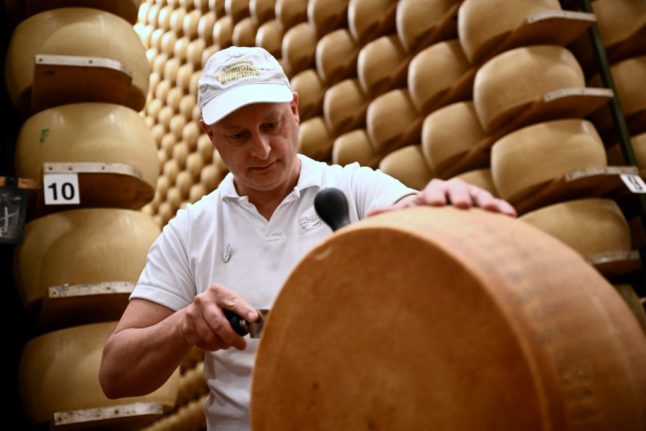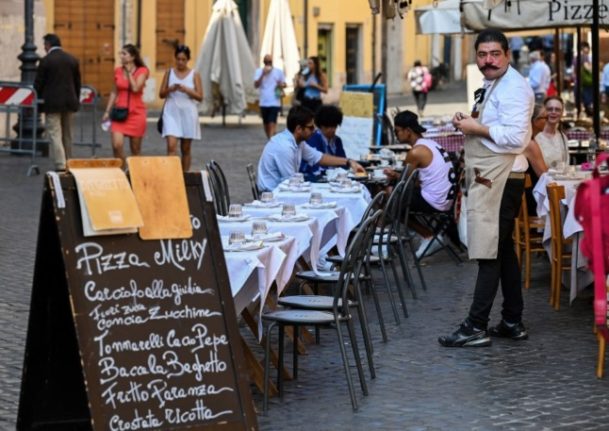Italian cheesemakers have installed a microchip the size of a grain of salt into their world-famous Parmigiano Reggiano cheese to fight food fraudsters.
In a century of trying to battle off cheaper imitations, the Consortium for Parmigiano Reggiano cheese has stepped up its efforts with this latest innovation.
As a product that costs nearly 20 euros per kilogram on average in Italy (depending on age), replicating a cheaper version is lucrative.
The PRC estimated that the earnings from counterfeit cheese netted about around 1.84 billion euros last year.
READ ALSO: What are the rules on bringing cheeses and meats to the US from Italy?
In a bid to stop the cheese copycats, the Consortium in March launched the digital label to “make Parmigiano Reggiano PDO even more traceable and secure”.
PDO refers to the Protected Designation of Origin status (in Italian, DOP) and is awarded to foods produced in a certain geographical area with recognised skills.
In the case of Parmigiano Reggiano, it’s only granted to a limited number of cheese producers.
This protected status is exactly what makes Parmigiano Reggiano authentic and makes any cheese not following the Consortium’s strict guidelines a knock-off.
READ ALSO: Ask an expert: ‘What’s the difference between Italy’s Parmigiano Reggiano and parmesan cheese?’
Parmigiano Reggiano is made in an area that includes three cities – Parma, Reggio Emilia, and Modena.
The first two cities gave the cheese its name, where most of the cheese production takes place across around 350 dairy farms.
Over the past three months, the cheese producers have experimented with the microchip on roughly 120,000 wheels, each weighing approximately 40kg.
Now, talks are underway to extend the technology to the entire production.
READ ALSO: Italian man crushed to death by falling cheese wheels
Speaking to the Wall Street Journal on Thursday, Alberto Pecorari, from the PRC, said, “We keep fighting with new methods. We won’t give up.”
Social media users have expressed concern about potentially eating a microchip, which is however food-safe and unlikely to be ingested as it’s inserted into the hard rind.
Hold up, Italians! What if I don’t want to eat a microchip? https://t.co/jSr1q5o9qf
— Shaun Chavis (@ShaunChavis) August 18, 2023
Employing a micro piece of technology is the newest attempt to verify the cheese’s origin. The previous method of stamping a unique and sequential alphanumeric code showing the month and year of production hasn’t thwarted fraudsters.
“Since the Consortium was established in 1934, we have been at the forefront in promoting and defending its authenticity and communicating worldwide the differences with similar products that do not meet the strict PDO requirements,” Nicola Bertinelli, president of the Consortium told Italian newspaper La Repubblica.
“We are proud to be the first Protection Consortium to introduce these labels, digital and secure, to guarantee an even more protected and traced product.”



 Please whitelist us to continue reading.
Please whitelist us to continue reading.
Member comments